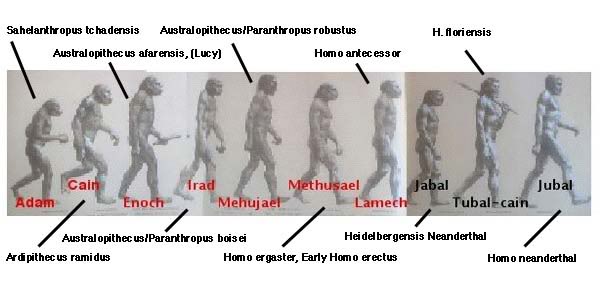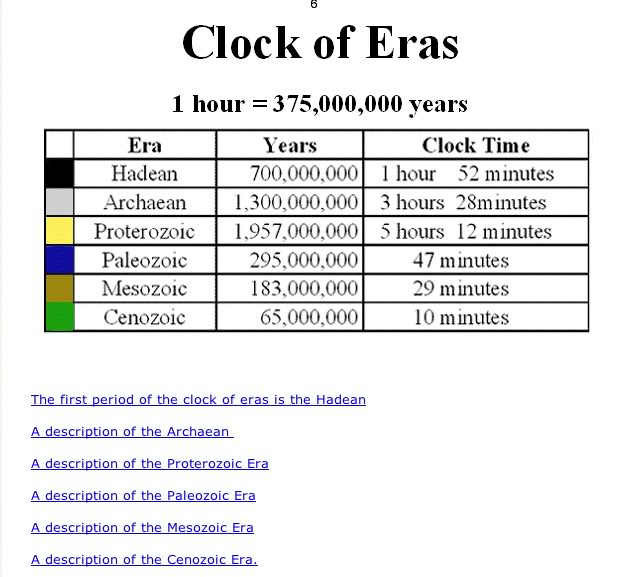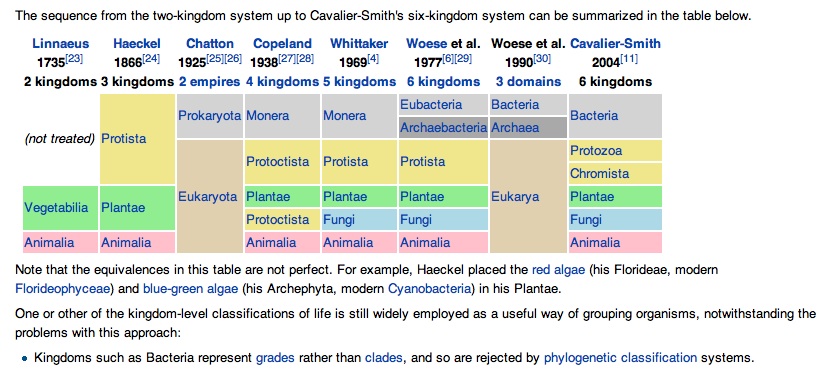A
Asyncritus
Guest
[FONT="]
Yes, yes, and...? That proves what?
Where else could it arise from? And what is your point? Ontogeny recapitulates...?
But you've failed to address my point. Let me copy and paste, and wait for some piece of nonsense:[/FONT][FONT="]
[/FONT]
I bet you are - and I'll be surprised if you can provide an answer that stands up to any scrutiny. But I'm prepared to be surprised, as I say. Go right ahead.
[/FONT]
[FONT="]Surprisingly, evidence derived from DNA analyses does not provide a final answer to the question of the relationship of lungfish to land animals. The closest lower vertebrate group to the land animals could be the coelacanth, bony fish or lungfish. [/FONT]
[FONT="]Occasionally, I have been asked if it is true that lungfish have "human organs" such as a liver and lungs and so on. The short answer to this is a resounding "no". Lungfish are not, in any way, close to human beings.[/FONT]
[FONT="]http://www.annekempslungfish.com/what_is_a_lungfish.html[/FONT][FONT="]
[/FONT]
[FONT="]So if that is correct, lungfish and any higher taxa have no relationship at all. Your hopes are dashed, if they ever really existed.[/FONT]
[FONT="]
That is precisely the case, and your fudging of the facts really doesn't do you any credit at all.
[/FONT]
They evolved their own way, did they? And what way was that, and where is your evidence? In the question-begging room, I'm sure, but tell me otherwise.
This is another illustration of Austin Hughes remarks. Genetic junk analyses have no regard for phenotypic problems.
How you can say lungfish are ' more closely related to us' than other fish is beyond me. Are they related to bananas as closely as we are? (60% of our genome is identical (?) to the bananas.)
Perhaps you would like to define 'closely related' for the readers to see exactly what you might mean. As far as I personally am concerned, the description is meaningless.
[/FONT]
[/FONT]By modifying something already there. Perhaps you've noticed a goldfish kept in an inadequate contrainer, gulping air. What is does, is swallow the air, and absorb the oxygen in the throat. Fish with larger surface areas in the throat, tend to survive better. So that easily leads to invaginations of the throat.
Not surprisingly, embryology shows that lungs develop from the throat.
The embryonic phase of lung development begins with the formation of a groove in the ventral lower pharynx, the sulcus laryngotrachealis (stage 10, ca. 28 days, 10
[FONT="]
Yes, yes, and...? That proves what?
Where else could it arise from? And what is your point? Ontogeny recapitulates...?
Truth? What truth? That a fish got out of the water, developed lungs (or was it the other way round?) Please don't insult anybody's intelligence.The truth is much more interesting than your straw fairy tale.
But you've failed to address my point. Let me copy and paste, and wait for some piece of nonsense:[/FONT][FONT="]
[/FONT]
[FONT="][FONT="]Or did it sneak out, and the air flowing over its gills (and drying them out!) somehow, magically, turn them into lungs over millions of years? Maybe that's why there are millions of dead fish fossils! They all died trying to develop lungs! [/FONT]
[FONT="]Surprise.[/FONT]
I bet you are - and I'll be surprised if you can provide an answer that stands up to any scrutiny. But I'm prepared to be surprised, as I say. Go right ahead.
Ah, these rubbish homologies again! What was it de Beer was saying again?You've been badly misled about that. The dipnomorpha share many homologies with lungfish,
[/FONT][FONT="]but are intermediate between them and more primitive Rhipidista.
[/FONT]
[FONT="]Surprisingly, evidence derived from DNA analyses does not provide a final answer to the question of the relationship of lungfish to land animals. The closest lower vertebrate group to the land animals could be the coelacanth, bony fish or lungfish. [/FONT]
[FONT="]Occasionally, I have been asked if it is true that lungfish have "human organs" such as a liver and lungs and so on. The short answer to this is a resounding "no". Lungfish are not, in any way, close to human beings.[/FONT]
[FONT="]http://www.annekempslungfish.com/what_is_a_lungfish.html[/FONT][FONT="]
[/FONT]
[FONT="]So if that is correct, lungfish and any higher taxa have no relationship at all. Your hopes are dashed, if they ever really existed.[/FONT]
[FONT="]
Really? You mean, they are identifiable as lungfish? And may simply have been other species of lungfish, which are as different from one another as many other species of birds or mammals are different from one another?And there are a variety of lungfish in the fossil record, quite different from the present-day ones.
That is precisely the case, and your fudging of the facts really doesn't do you any credit at all.
The old trick re-emerges. Assume something, and that assumption forms 'proof''. Sorry, that won't wash. How did the lungs in fish before lungfish evolve, why, from what and where’s your evidence?See above. Lungs evolved in fish before the lungfish. Surprise, again.
I'm truly grateful to you.Lots of surprises for you, today.
[/FONT]
[FONT="][FONT="]And since they haven't changed, that means that they aren't the ancestors of anything! (Like tetrapods!)[/FONT]
[FONT="]
They evolved their own way.[/FONT]
They evolved their own way, did they? And what way was that, and where is your evidence? In the question-begging room, I'm sure, but tell me otherwise.
The article quoted above says that this is not the case. You should read it some time. The coelacanth is their nearest relative (ha ha ha!), and they have nothing to do with us at all.Genetic analysis, however shows that lungfish are more closely related to us than to other fish. And we know this works, because the method can be tested on organisms of known descent.
This is another illustration of Austin Hughes remarks. Genetic junk analyses have no regard for phenotypic problems.
How you can say lungfish are ' more closely related to us' than other fish is beyond me. Are they related to bananas as closely as we are? (60% of our genome is identical (?) to the bananas.)
Perhaps you would like to define 'closely related' for the readers to see exactly what you might mean. As far as I personally am concerned, the description is meaningless.
[/FONT]












